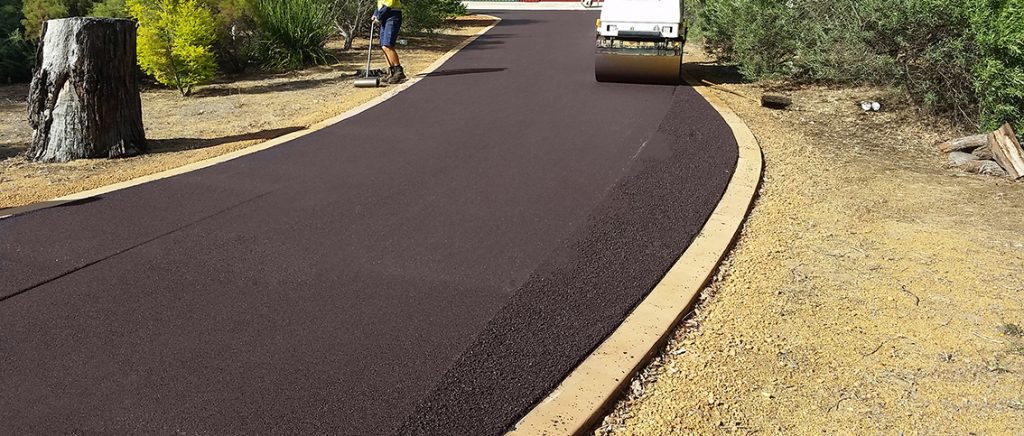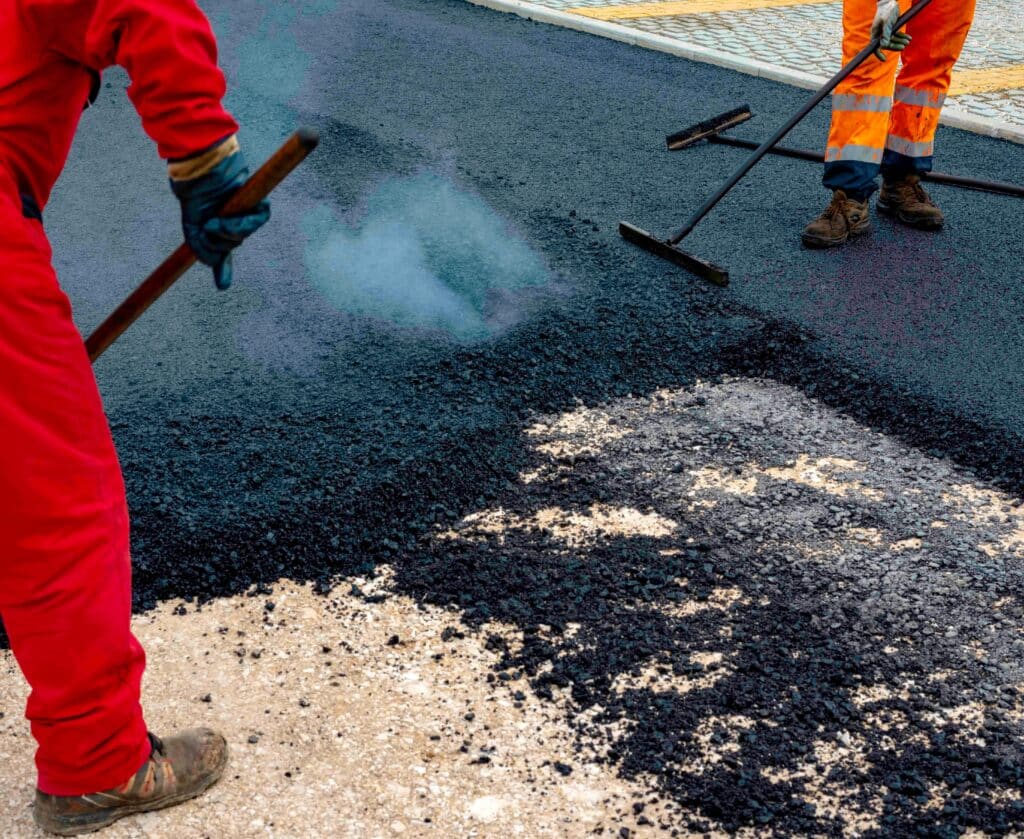Unlocking the Keys of Warm Mix Asphalt Technology
Discovering the depths of hot mix asphalt innovation uncovers a globe where precise formulas and thorough processes converge to form our roadways and facilities. The combination of fillers, binders, and aggregates isn't just a building task yet a tactical orchestration of toughness and effectiveness.
Relevance of Warm Mix Asphalt
Warm Mix Asphalt plays an important function in modern-day facilities advancement due to its toughness and cost-effectiveness. As the most typically made use of paving product for roadways, freeways, and vehicle parking whole lots, Warm Mix Asphalt offers an array of benefits that add to its relevance in construction jobs.
The sturdiness of Hot Mix Asphalt stems from its composition, that includes accumulations, binder, and filler materials that are thoroughly picked and mixed to satisfy details performance requirements. This accurate combination leads to a strong and flexible pavement that can sustain frequent use without substantial deterioration. Warm Mix Asphalt is 100% recyclable, further enhancing its sustainability and environmental advantages. Generally, the importance of Hot Mix Asphalt in framework development can not be understated, as it remains to be a foundation of modern construction methods.
Parts of Asphalt Mixes
The structure of asphalt mixes includes carefully chosen aggregates, binder, and filler products that are essential for attaining specific performance demands. Accumulations are the primary part of asphalt blends, giving stamina and stability. These accumulations can be all-natural, such as gravel or smashed stone, or synthetic, like recycled products from old pavements. The binder, generally asphalt or asphalt concrete, holds the accumulations together and offers versatility and sturdiness to the mix. The selection of the binder is critical as it straight affects the mix's efficiency in different climate condition. Fillers, such as hydrated lime or Portland cement, are utilized to boost the mix's workability and aging resistance. Angled Parking.
The mix and percentage of these parts play a significant duty in establishing the high quality and performance of the asphalt mix. Designers thoroughly design the mix to meet particular needs, thinking about factors like web traffic quantity, climate problems, and pavement life expectancy. Correct option and balancing of aggregates, binder, and fillers are necessary for creating long lasting, resilient asphalt pavements.
Combining and Manufacturing Strategies

Once the aggregates are chosen, the binder, usually asphalt concrete, is included in bind the materials together. The binder's top quality and quantity considerably influence the mix's strength, resistance, and flexibility to ecological variables. Additionally, fillers like hydrated lime or Rose city cement may be incorporated to enhance specific characteristics of the asphalt mix, such as its workability or dampness resistance.
During manufacturing, the aggregates and binder are heated, generally in between 250-325 ° F(121-163 ° C ), to facilitate blending and ensure proper finish of the aggregates. The mixing process should be extensive to accomplish a homogeneous mixture that advertises the wanted performance qualities of the asphalt. Numerous techniques, such as batch blending or drum mixing, are utilized to accomplish top notch and consistent asphalt mixes for building and construction projects.
Elements Affecting Asphalt Efficiency
Variables influencing asphalt efficiency incorporate a range of variables that impact the durability, long life, and overall high quality of asphalt pavements. One crucial variable is the top quality of products utilized in the asphalt mix.

Ecological problems additionally influence asphalt efficiency. Temperature variants, dampness seepage, and web traffic loads can all impact the structural honesty of the sidewalk. Layout factors to consider, such as sidewalk density and water drainage, he said are vital in making certain the lasting efficiency of the asphalt pavement. By very carefully thinking about these elements, professionals and engineers can enhance read the full info here asphalt efficiency and enhance the life span of sidewalks.
Sustainable Practices in Asphalt Modern Technology

WMA allows for the production and positioning of asphalt blends at lower temperature levels compared to standard hot-mix asphalt, resulting in lowered energy usage and greenhouse gas emissions. The use of porous asphalt mixes can help alleviate stormwater runoff issues by permitting water to penetrate via the pavement and into the ground, advertising all-natural water filtration and recharge processes.
Final Thought
In verdict, hot mix asphalt modern technology plays a critical role in contemporary infrastructure growth as a result of its longevity and cost-effectiveness. By very carefully balancing components, employing proper mixing strategies, and taking into consideration numerous variables, engineers can develop high-grade asphalt blends that stand up to rush hour lots and rough climate conditions. Embracing lasting methods, such as using recycled materials and warm-mix innovations, even more improves the ecological friendliness of asphalt technology.
Blending and manufacturing strategies in hot mix asphalt technology entail the exact combination and handling of aggregates, binder, and fillers to create a durable and high-performance asphalt mix.Elements influencing asphalt efficiency encompass a variety of variables that impact the durability, longevity, and total quality of asphalt pavements. Sustainable practices in asphalt linked here modern technology include different efforts intended at reducing the ecological impact of asphalt production and paving procedures. By including redeemed asphalt pavement (RAP) and recycled asphalt shingles (RAS) into brand-new asphalt mixes, the market can significantly decrease the usage of raw materials and energy, while also lowering garbage dump waste.
WMA enables for the production and positioning of asphalt mixes at reduced temperatures contrasted to traditional hot-mix asphalt, resulting in decreased energy intake and greenhouse gas emissions.